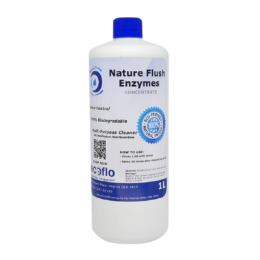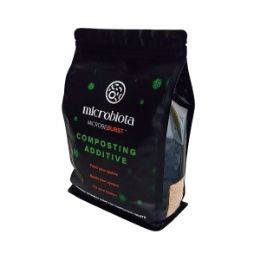
Composting toilets are the perfect solution to off-grid toileting. They don't use water, they don't require connection to sewerage or septic tank, and they produce usable humus. They're easy and comfortable to use, and, when set up correctly, aren't difficult to maintain! To ensure your toilet is performing at its best, it's recommended you stick to a regular maintenance schedule.
Keeping the Compost Pile Healthy
In terms of day-to-day maintenance, the main thing is to ensure that everything is working correctly and the toilet is creating the right environment for your compost to thrive in. A healthy pile breaks down waste efficiently at optimum speed. For the most part, as long as your system has been set up correctly, keeping your compost healthy is easy:
- Add bulking agent regularly (carbon based material e.g. wood shavings, hemp hurd, coco peat, peat moss)
- Add WCTNZ® | Microbiota MicrobeBURST™ Composting Additive regulary
- Don't add foreign objects (e.g. food scraps)
- Don't use harsh chemical cleaners or soaps
- Avoid extreme temperatures - add moisture to a pile drying out in hot weather, add a heating pad to your system if living in cold conditions
- Ensure exhaust fan is working properly
If your compost starts to produce nasty odours, this is an indication of something not working correctly. For advice to troubleshoot this, read How to Troubleshoot a Composting Toilet Generating Odour.
Cleaning the Toilet
Like any toilet, your composting toilet will need to be cleaned regularly for hygiene purposes.
Clean the pedestal weekly. This includes the seat, the lid, the pedestal outer, and the inside of the bowl. Never use harsh chemicals, soaps, or homemade baking soda based cleaners, as these will kill your compost pile. Use Nature Flush | Enzymes - Concentrate 1 Litre (Enzymatic) for all your composting toilet's cleaning needs, as not only does this naturally derived detergent clean your toilet, but helps with the composting process, too! Simply spray Nature Flush | Enzymes - Concentrate 1 Litre (Enzymatic) on, and wash off with a bit of water or wipe away with paper towels.
When it comes to composting chambers and trays, it is advised you clean these yearly as part of your maintenance schedule. Continuous composting chambers are the only chambers that do not require cleaning, as they are always in use. To clean your chamber/tray, spray it with Nature Flush | Enzymes - Concentrate 1 Litre (Enzymatic) and let it sit and soak for a short time. Then, rinse off with a low-pressure hose, making sure all run-offs go into a pre-prepared divot in the ground. For double-walled chambers, run water through them and leave to drain out of bottom chamber. Let the parts dry before putting back into use.
For more information on keeping your composting toilet clean, read How to Clean a Composting Toilet.
Cleaning the Fan
The fan is an essential part of your composting toilet system and needs to be in good working order always. It draws air through the system, aerating the compost, aiding evaporation of liquids, and disposing of smells in the process. To prolong the life of your fan, it is advised that you clean it yearly.
Once a year, clean the blades of your fan to remove any build up of dust or debris.
Dust and debris limit the fan's ability to move air, and put an increased load on the motor due to decreased efficiency of the blades.
Fan bearings and seals remain intact and do not need any servicing for the life of the fan.
Mixing the Pile
If your system has a mixing mechanism or rotational chamber, make sure to use these. Mixing the compost facilitates the composting process and increases your unit's volume capacity, meaning you get more use out of your chamber before having to empty it. Typically, mixing is done once or twice a week, but this can differ between systems. Read the manual to find out how often your system requires mixing.
If you have a continuous composting system, rake the top of this about once a month.
Systems with automatic mixing mechanisms mix automatically according to use and you do not need to do any manual mixing.
If you do not have a mixing mechanism or tool, do NOT mix the compost by hand.
Disposing of Compost
When your composting chamber/tray fills up, you will need to dispose of its contents appropriately. Humanure should always be buried 150mm sub-strata in a designated land application area. It can be used as fertilizer when planting trees (including fruit trees), but cannot be used on edible plants such as vegetables or herbs. If your system requires frequent emptying, you will need to set up a Secondary Treatment System in the form of two composting bins, onsite, to let the compost mature before burial. The system will work on a rotational schedule - use one bin to collect compost for a year, then let it sit for a further year to mature its contents, in which time you will fill up the second bin.
For more information on compost disposal read What to Do with Humanure.
Need help choosing a system? Call WCTNZ® on 0800 022 027 for free advice on system specification and setup. Advanced design consultancy services are also available.
WCTNZ® | Waterless Composting Toilets NZ Limited | Copyright 2022 ©


















